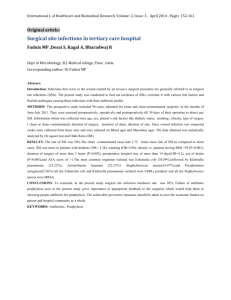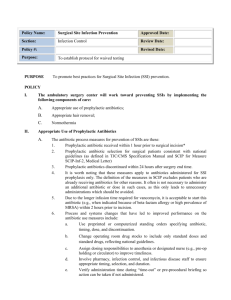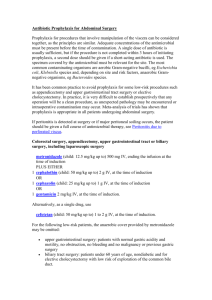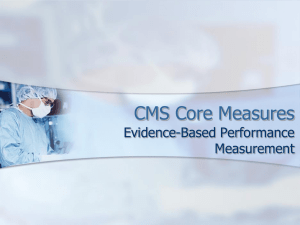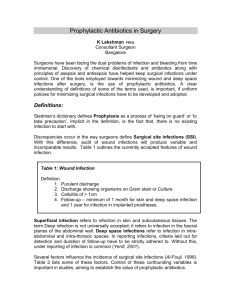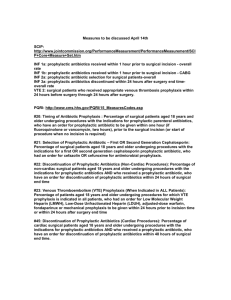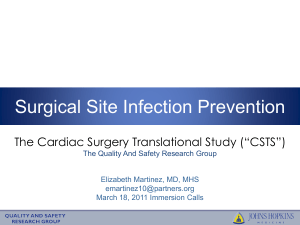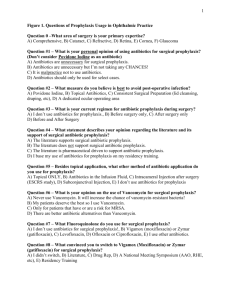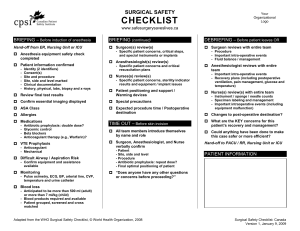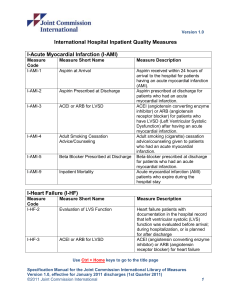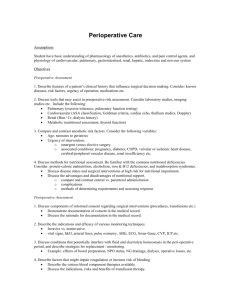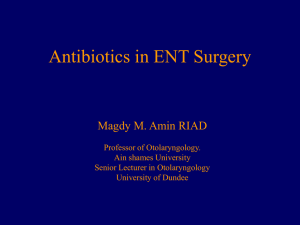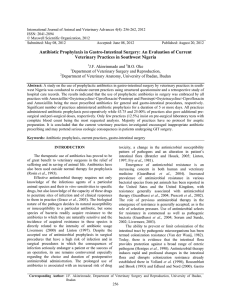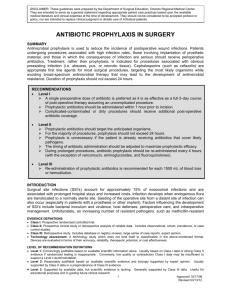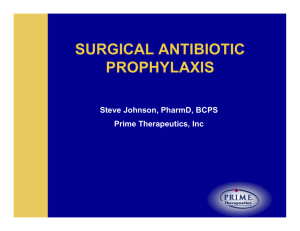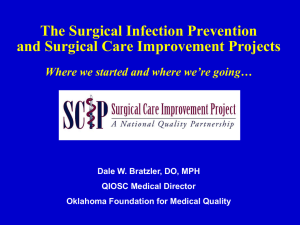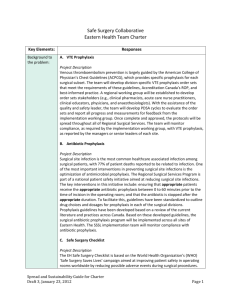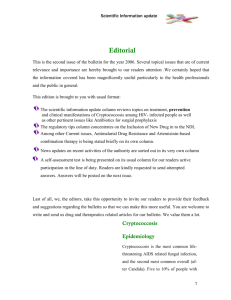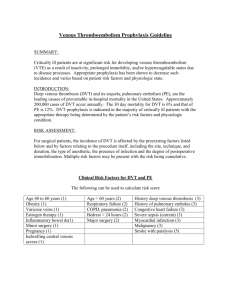Surveillance Of Peri-Operative Antibiotic Prophylaxis
advertisement
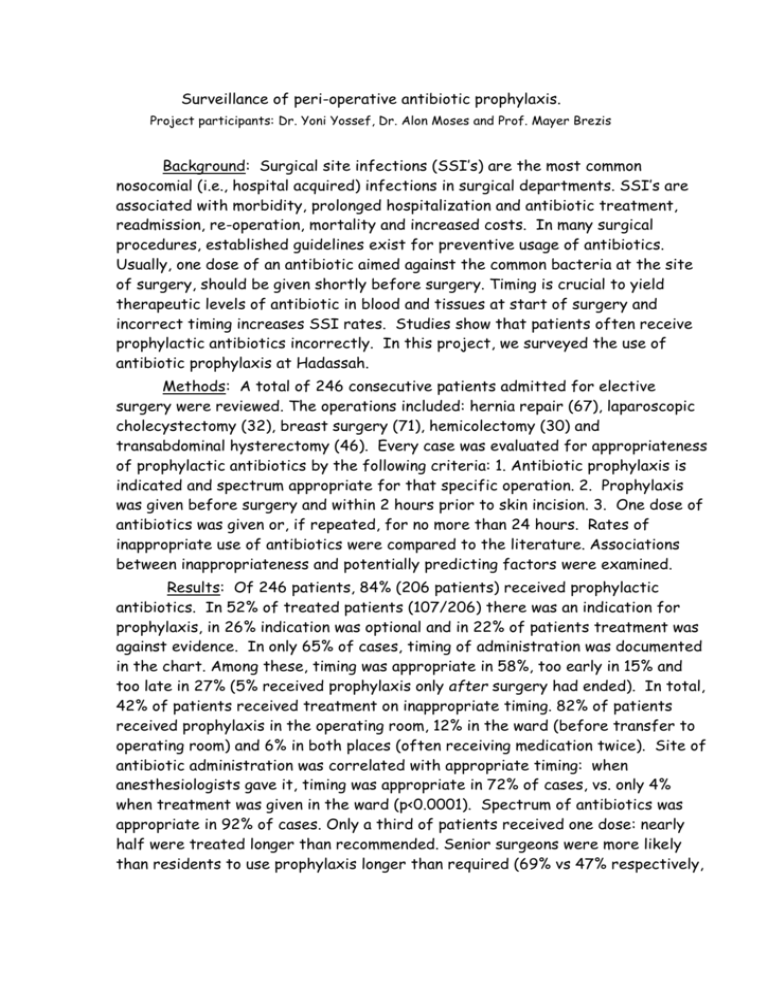
Surveillance of peri-operative antibiotic prophylaxis. Project participants: Dr. Yoni Yossef, Dr. Alon Moses and Prof. Mayer Brezis Background: Surgical site infections (SSI’s) are the most common nosocomial (i.e., hospital acquired) infections in surgical departments. SSI’s are associated with morbidity, prolonged hospitalization and antibiotic treatment, readmission, re-operation, mortality and increased costs. In many surgical procedures, established guidelines exist for preventive usage of antibiotics. Usually, one dose of an antibiotic aimed against the common bacteria at the site of surgery, should be given shortly before surgery. Timing is crucial to yield therapeutic levels of antibiotic in blood and tissues at start of surgery and incorrect timing increases SSI rates. Studies show that patients often receive prophylactic antibiotics incorrectly. In this project, we surveyed the use of antibiotic prophylaxis at Hadassah. Methods: A total of 246 consecutive patients admitted for elective surgery were reviewed. The operations included: hernia repair (67), laparoscopic cholecystectomy (32), breast surgery (71), hemicolectomy (30) and transabdominal hysterectomy (46). Every case was evaluated for appropriateness of prophylactic antibiotics by the following criteria: 1. Antibiotic prophylaxis is indicated and spectrum appropriate for that specific operation. 2. Prophylaxis was given before surgery and within 2 hours prior to skin incision. 3. One dose of antibiotics was given or, if repeated, for no more than 24 hours. Rates of inappropriate use of antibiotics were compared to the literature. Associations between inappropriateness and potentially predicting factors were examined. Results: Of 246 patients, 84% (206 patients) received prophylactic antibiotics. In 52% of treated patients (107/206) there was an indication for prophylaxis, in 26% indication was optional and in 22% of patients treatment was against evidence. In only 65% of cases, timing of administration was documented in the chart. Among these, timing was appropriate in 58%, too early in 15% and too late in 27% (5% received prophylaxis only after surgery had ended). In total, 42% of patients received treatment on inappropriate timing. 82% of patients received prophylaxis in the operating room, 12% in the ward (before transfer to operating room) and 6% in both places (often receiving medication twice). Site of antibiotic administration was correlated with appropriate timing: when anesthesiologists gave it, timing was appropriate in 72% of cases, vs. only 4% when treatment was given in the ward (p<0.0001). Spectrum of antibiotics was appropriate in 92% of cases. Only a third of patients received one dose: nearly half were treated longer than recommended. Senior surgeons were more likely than residents to use prophylaxis longer than required (69% vs 47% respectively, p=0.007). In total, 64% of patients given antibiotics, were treated inappropriately (95% confidence intervals: 57%-70%). Discussion and conclusion: Guidelines for peri-operative prophylactic antibiotics are only partially implemented. The results are comparable to those reported in US hospitals, before an intervention:1 as shown in Table 2 (below) and demonstrate clear room for improvement at Hadassah. Table 2: Performance for peri-operative antibiotic prophylaxis: percent of correct administration is shown in a group of US hospitals at 4 consecutive observations (before and after an improvement intervention). Mean performance at Hadassah is superimposed on originally published table. Mean performance at Hadassah 58% 92% 47% The results have been discussed with surgical teams who have agreed on principles for improvement: local protocols for correct administration of prophylactic antibiotics should be developed; antibiotic prophylaxis should be given in operating room by anesthesiologists; timing should be documented and duration of treatment limited to 24 hours - preferably one single dose prior to surgical incision. Electronic monitoring may be a preferred method of surveillance for appropriate surgical infection prophylaxis. Future plans: improving prophylaxis should be part of a larger systematic effort to reduce hospital acquired infection (see below). 1 Dellinger EP, Hausmann SM, Bratzler DW, et al. Hospitals collaborate to decrease surgical site infections. The American Journal of Surgery. 2005;190(1):9-15.
